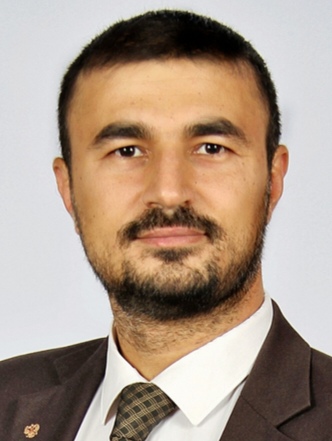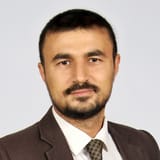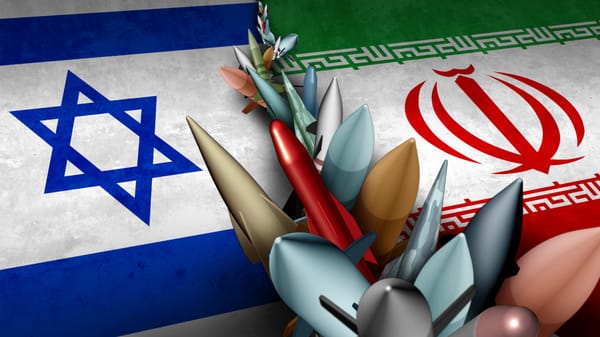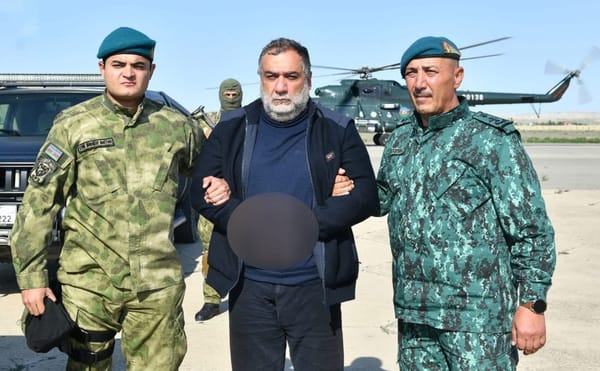Unwanted Allies: Why the West Denies Asylum to Putin’s Opponents?

Since the start of the war in Ukraine, millions of Russians opposed to the regime have fled the country—escaping repression, avoiding mobilization, or simply refusing to continue supporting Putin’s system with their labor and taxes. Yet beyond the borders of the aggressor state, they are clearly unwelcome: visa and other entry barriers continue to rise, and only a handful manage to obtain the much-desired asylum. So why are democratic countries shutting their doors to those fleeing dictatorship? And who truly benefits from this new immigration reality—Europe or the Kremlin?
After Russia launched its full-scale invasion of Ukraine in February 2022, the global geopolitical landscape changed dramatically. Along with sanctions and Moscow’s diplomatic isolation, the West was confronted with a massive wave of emigration not only from Ukraine but also from Russia. Those leaving included both outspoken critics of the Putin regime and others who simply sought to avoid economic hardship or military conscription.
Paradoxically, even as confrontation with the Kremlin intensified, Western countries almost simultaneously began tightening immigration policies toward Russian citizens—and they continue to do so. In effect, this approach leaves several million of the most direct and active opponents of Putin’s criminal policies entirely at his disposal. Is there any rational explanation for this “ostrich policy,” or are we simply overestimating the democratic world’s commitment to the values it claims to defend when we expect firm action against authoritarian regimes?
The Iron Curtain from the Other Side
The full-scale war launched by Russia in 2022 led many Western countries to revise their visa and migration policies toward Russian citizens. In the very first weeks of the conflict, the European Union suspended its agreement with Russia on simplified visa issuance, returning to stricter procedures. By September 2022, the agreement was fully frozen, resulting in a dramatic 89% drop in the number of Schengen visas issued to Russians compared to pre-pandemic 2019. While Russian citizens were previously the largest group of Schengen visa recipients, they have since been overtaken by applicants from China, Turkey, India, and even Morocco.
Despite the overall decline, Schengen countries still issued approximately 448,800 visas to Russian citizens in 2023. Although this number is significantly lower than before, it remains relatively high. This prompted concern from EU Commissioner for Home Affairs Ylva Johansson, who called for further tightening of visa policies toward Russians, citing growing risks of espionage and subversive activity.
Tensions within the EU began to mount. Eastern European countries—particularly the Baltic states, Poland, and Finland—pushed for a complete ban on tourist visas for Russians. Meanwhile, Germany, France, Italy, and Greece continued to issue them actively, citing both economic and humanitarian reasons.
In addition to increased costs and delays in visa procedures, several EU countries did in fact stop issuing certain categories of visas. Since autumn 2022, the Czech Republic has fully closed its borders to Russian tourists and halted the issuance of new visas and residence permits, except in limited humanitarian cases (such as family reunification). The Netherlands and Norway publicly declared that they had all but ceased processing asylum applications from Russian citizens. The Baltic states, Poland, and Finland introduced significant border restrictions on Russians in 2022–2023, especially for those holding tourist visas, citing moral and security concerns. Taken together, these measures have effectively blocked legal access to the West for the overwhelming majority of Russian citizens.
At the same time, Western governments continued to express verbal support for Russians facing political persecution. Several countries launched special programs to admit Russian scholars, journalists, human rights defenders, and civil society activists. However, in practice, the same countries significantly restricted the broader influx of refugees from Russia.
According to Eurostat data, Russian nationals filed around 18,400 asylum applications in European countries in 2022—only slightly more than in 2019 (around 15,000) and significantly fewer than applications filed by Ukrainian or Belarusian citizens. Moreover, the acceptance rate for Russian asylum applications was under one-third, compared to 90% for Ukrainians and 86% for Belarusians.
Some EU states effectively imposed an unofficial moratorium on accepting Russian refugees, sharply tightening legal procedures and introducing fast-track reviews that overwhelmingly resulted in rejections. Even Russians with clear opposition credentials encountered insurmountable barriers when seeking protection in the West and were often forced to return home—where they faced the threat of politically motivated imprisonment or, in some cases, extrajudicial physical retaliation.
What’s NATO Got to Do With It?
The United States, Canada, and the United Kingdom—key NATO members and principal destinations for Russian emigration to the wider West—have taken a pointedly cautious and restrained stance. These countries suspended direct air travel with Russia as early as March 2022, and their airspace has remained closed to aircraft from the aggressor state. Even before the war, U.S. consulates in Russia operated under restrictions, and following the invasion of Ukraine and reciprocal diplomatic expulsions, it became entirely impossible to obtain U.S. visas on Russian territory. As a result, Russian citizens were forced to apply in third countries.
No “free world” government has introduced special programs for accepting Russian citizens avoiding conscription, citing fears of potentially allowing in undesirable individuals. Moreover, some countries have declared they will not admit Russians involved in the war in Ukraine—even those holding valid residence permits (as in the case of the Baltic states). This, unsurprisingly, contributes to retaining both human capital and tax revenue inside Putin’s Russia. Consequently, in addition to the expected sanctions targeting individuals close to the Kremlin, immigration services in democratic countries began subjecting all applicants from Russia to increased scrutiny.
As a result, the total number of Russians who received long-term visas or residence permits in G7 countries in 2022–2023 increased only within the bounds of statistical fluctuation. For example, during this period, the U.S. issued approximately 48,000 visas of various types to Russian citizens—including work, student, immigration, and refugee visas—while Germany granted around 36,000 residence permits. These figures are negligible when compared to the millions of Ukrainians welcomed into the EU and North America, and they remain modest relative to the overall population of Russia.
It is therefore safe to conclude that Western countries are deliberately restricting large-scale emigration from Russia, drawing little to no distinction between supporters of the Putin regime and its opponents.
An Exodus to Nowhere
Despite serious visa restrictions, emigration from Russia after the start of the war has reached historically significant levels. There are no precise figures on the number of people who have left. The Russian authorities do not publish such statistics, and indirect indicators—such as border crossings or the issuance of residence permits and citizenship abroad—offer only a fragmented and inconsistent picture.
Nevertheless, independent analytical estimates agree on one thing: the numbers are at least in the hundreds of thousands. By March 2022—just a few weeks after the invasion began—over 300,000 Russian citizens had already left the country. The first to depart were members of the most mobile and active segments of the population: IT specialists, employees of international companies, opposition activists, and journalists.
The second major wave of emigration came in late summer and early autumn 2022, directly tied to the announcement of mobilization. In September and October alone, estimates suggest that an additional 400,000 to 500,000 men of conscription age left Russia. By the end of the year, cumulative estimates of the total number of emigrants ranged from 500,000 to 1 million people, although the accuracy of these figures remains debated among researchers.
In 2023, the outflow continued, though at a slower pace. According to the "Re:Russia" project, between the beginning of the war and mid-2023, between 820,000 and 920,000 people may have left the country. A study by The Bell found that by mid-2024, at least 650,000 people who had left Russia after the war began had not returned. Taking returnees into account, the total number of those who attempted to emigrate or made significant efforts to do so likely exceeds one million. Thus, the “war-Putin exodus” has become the largest since the collapse of the Soviet Union and is comparable in scale to the emigration of the early 1990s.
A distinctive feature of this wave has been its geography. Unlike Soviet dissidents, who sought to reach the West, post-2022 Russian emigrants more often chose nearby and neutral countries—especially those accessible without a visa and via direct routes. According to The Bell, the primary destinations were post-Soviet states. Armenia took in about 110,000 people, Kazakhstan 80,000, and Georgia 74,000. A significant number of emigrants took advantage of Israel's repatriation program: according to official data, over 80,000 Russian nationals arrived there in 2022–2023.
In comparison, European Union countries accepted far fewer. Germany leads with around 36,000 Russians settling there during the war. The Baltic states, Poland, and Finland follow—despite a 4- to 7-fold increase in asylum applications, the absolute numbers amount to only a few thousand.
Other popular destinations include Serbia (30,000), Turkey, and the United Arab Emirates. Many who left saw these countries as transit points, hoping to eventually relocate to Europe or North America. However, strict Western visa policies shattered those plans. As a result, a large share of new emigrants ultimately settled in neighboring post-Soviet countries or in developing economies in Asia and the Middle East.
This has led to a peculiar redistribution of the brain drain. Many of Russia’s most qualified and politically dissenting citizens ended up not in democratic nations, but in states that are, at best, neutral toward the Kremlin—and in some cases openly supportive. As such, Western migration policy has directly limited the inflow of precisely those Russians who might have become valuable allies in resisting Russian authoritarianism.
The Best Left, the Convenient Stayed
The social and economic profile of those who left Russia also deserves close attention. According to sociological data, these are primarily young, educated, and politically active individuals. Most are between the ages of 20 and 40, and around 80% hold higher education degrees. There is a particularly high proportion of IT professionals, academics, and members of the creative intelligentsia. In other words, the people leaving Russia were among the most successful, qualified, and progressive segments of society—something that will inevitably impact both the country’s demographic and economic trajectory.
Even according to official figures from the state-run Rosstat, Russia’s net migration loss in 2022 exceeded 100,000 people. If one also accounts for natural population decline—exacerbated by the pandemic and wartime casualties—then total losses (again, based solely on official, Kremlin-approved statistics) reach approximately 600,000 people. This represents the steepest population drop in the country’s modern history.
On one hand, the continued outflow of the most active segments of the population is indeed worsening the labor shortage in the economy, especially in high-tech and entrepreneurial sectors. On the other hand—and more importantly from the Kremlin’s perspective—it simultaneously deprives Russian civil society of its critical mass. This reduces internal dissent and helps the regime maintain power. With a significant portion of opposition-minded citizens now living abroad, the likelihood of mass protest within Russia has decreased substantially. And, as we've seen, Western "opponents" of Putin are, perhaps unintentionally, aiding him by preventing these citizens from fully realizing their dissenting potential even outside the country.
Thus, by the fourth year of the civilized world’s active struggle against Putin’s aggressive dictatorship, a paradoxical situation has emerged: hundreds of thousands of Russians who are openly against the war in Ukraine and personally against Putin now live abroad—where nothing, in theory, should be stopping them from supporting the global fight against the Kremlin’s aggression. Yet Western allies show little interest in harnessing their potential, their energy, their thirst for justice, or their commitment to democratic values. On the contrary, it increasingly feels as though they are deliberately obstructing the formation of an alternative, anti-Putin “Russian world.”
Could it be that they genuinely don’t want to weaken the Kremlin’s grip too much—something fringe conspiracy theorists have long claimed? Or do they simply still fail to grasp the scale of the threat emanating from Russia?
This article is also published in other media.

Неудобные единомышленники: почему Запад отказывает врагам Путина в убежище?
С начала войны в Украине миллионы оппозиционно настроенных россиян покинули страну, спасаясь от репрессий и мобилизации или просто не желая продолжать поддерживать путинский режим своим трудом и налогами. Однако за пределами страны-агрессора им, очевидно, не рады — визовые и прочие барьеры постоянно растут, и заветное убежище получают считанные единицы. Почему же демократические страны закрывают двери перед теми, кто бежит от диктатуры? И кому на самом деле выгодна новая иммиграционная реальность — Европе или Кремлю?









